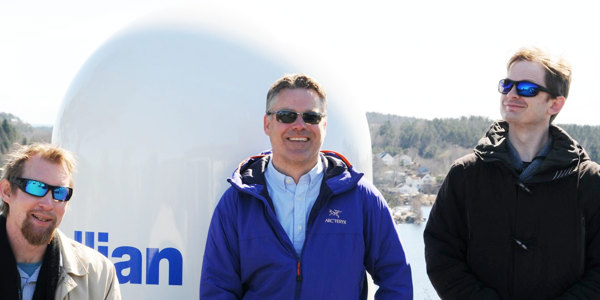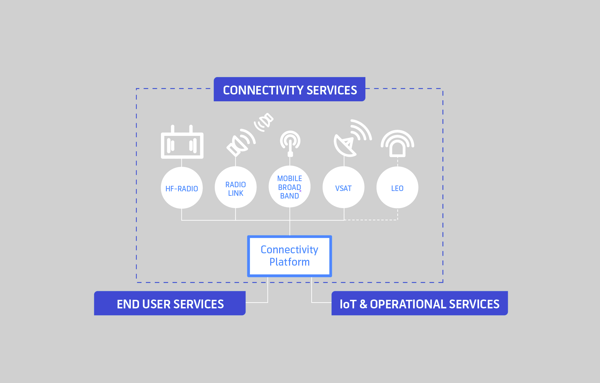
No COVID-break for our dedicated research team Pushing to open a new digitalisation chapter
The Research and Development (R&D) team at Telenor Maritime overcomes demanding COVID-restrictions to keep up the momentum of Low Earth Orbit (LEO) satellite communication research. The new LEO satellites may just start a new era of high-speed internet at sea.
The pandemic has crippled many ongoing international innovation projects. For the R&D team at Telenor Maritime, halting the LEO initiative was not an option. From their home office in Arendal, Norway, they continued their work to explore the possibilities of the new generation of satellites.
The LEO research project is a cooperation between the Telenor Maritime R&D team located in Arendal, Norway, and the Telesat team located in Canada and England. The goal of the project was to test the connection and its behaviour to and from the new generation of satellites, called LEO. Such testing requires a modified VSAT antenna, precisely positioned to be able to catch the signal during the short time frame the Telesat Phase 1 LEO satellite passes above. Normally, such an antenna installation requires onsite presence of Telesat technicians.
Since travelling was restricted, the teams had to find an alternative way to collaborate. Knut Fjellheim, Chief Technology Innovation Officer, and his team came up with a creative solution: They mounted an Intellian VSAT antenna themselves in Knut’s backyard. A local network was set up to simulate a ship environment and at the same time provide connection from the antenna to the ground station located at the Telesat HQ in Canada and Telesat’s England facility.
“With this rigged VSAT antenna, we are able to test relevant access technologies over the LEO satellite. We are running various scenarios where we simulate different traffic incidents to examine transmission performance and data prioritisation between applications,” Knut explains. “Each time the satellite passes above, we have around 15 minutes at our disposal. During one week of testing, we have run over 30 variations.”
The most important change LEO introduces is that ship and shore can now communicate with the same quality as they would with a land-based fibre connection. This is due to the increased signal strength and closer proximity of the LEO satellites. With a speed of several hundred Mbps to a terminal and a round trip signal delay of only 40 ms, the IT systems on board can now use the same cloud applications that we are familiar with on land.
Knut Fjellheim, CTIO of Telenor Maritime
Robust hybrid connectivity
The LEO satellites and technology they inspire are introducing a new chapter in the history of maritime communication. The LEO connectivity will become a standard part of Telenor Maritime’s Connectivity Platform, a solution that seamlessly combines various connectivity bearers into a powerful connectivity source. It comes in many configurations, adapted to the market it is meant to serve, and can be scaled from one single modem used on an offshore ship or as a fully configured platform with multiple bearers. The architecture is designed and intended to serve as a business enablement platform from which the owner can launch a multitude of different services as part of an overall digital strategy.
Equipped with LEO technology, the Connectivity Platform will allow deep sea vessels to tap into the many opportunities of a high-capacity internet connection. For passengers and the crew, this opens the door to services such as streaming, entertainment and social media. For IT equipment this means cloud computing and IoT solutions, something that is just not possible with today’s limited internet connection. LEO technology will stimulate new services and possibilities for the maritime industry around the world, both for the shipowners, OEMs and third parties.
Truly global
Currently, Legacy satellites usually cover areas with the most traffic, leaving a great many blind spots around the globe. This means all kinds of inconveniences for the industry. This is exactly why Telesat is now concentrating its efforts to “bridge the gap” and create truly global satellite coverage with their Telesat Lightspeed LEO network. This will provide operational stability to shipowners and OEMs alike, as well as ensure business continuity in all situations, even in the most remote corners of the world.
If you’d like to know more about Telenor Maritime’s hybrid connectivity solutions and LEO innovation, please contact us at innovation@telenormaritime.com. Join the conversation at LinkedIn



